Start as you mean to go on
This blog is a follow up to my October piece that reflected on the impact of coronavirus on physical education thus far. As we enter 2021, I am more committed than ever of the need to start with the end (or the optimum) in mind and work backwards from there. As such, this blog is structured around the ideas of happiness, health and hope as that is what I want for myself, for the profession and most importantly for all young people in our schools.
I have lost count of how many revisions the DfE have made to their guidance for schools (at the 11th hour) but the latest set updated on 30th December provides more on ‘wraparound provision and extra-curricular activity’ as well as ‘physical activity in schools.’ Correct at time of blog publication, but no doubt already updated again, so please refer to DfE link for the following extracted text:
Wraparound provision and extra-curricular activity
Schools should be working to resume all their breakfast and after-school provision in all local restriction tiers. Resuming this provision is important to ensure parents and carers can continue to or return to work, as well as to provide enriching activities for children that improve their wellbeing or support their education. Schools should also work closely with any external wraparound providers which their pupils may use, to ensure as far as possible, children can be kept in a group with other children from the same bubble they are in during the school day.
Schools can consult the guidance produced for providers who run community activities, holiday clubs, after-school clubs, tuition and other out-of-school provision for children, as much of this will be useful in planning extra-curricular provision. This includes schools advising parents to limit the number of different out-of-school settings providers they access, as far as possible.
Schools may also choose to open up or hire out their premises for use by external bodies or organisations, such as external coaches or after-school or holiday clubs or activities. In doing so, schools should ensure they work with providers to consider how they can operate within their wider protective measures and should also have regard to any other relevant government guidance. For example, where opening up school leisure facilities for external use, ensuring they do so in line with government guidance on working safely during coronavirus (COVID-19) for providers of grassroots sport and gym or leisure facilities.
Schools should also read the local restriction tiers guidance to find out what tier their area is in and the additional restrictions that apply. Currently, schools can continue to offer all before and after-school educational activities and wraparound childcare in all local restriction tiers.
Physical activity in schools
Schools have the flexibility to decide how physical education, sport and physical activity will be provided while following the measures in their system of controls.
In considering what team sports can be offered, those whose national governing bodies have developed guidance under the principles of the government’s guidance on team sport and been approved by the government are permitted. Schools must only provide team sports on the list available at return to recreational team sport framework.
Pupils should be kept in consistent groups, sports equipment thoroughly cleaned between each use by different individual groups.
Schools can hold PE lessons indoors, including those that involve activities related to team sports, for example practising specific techniques, within their own system of controls. For sport provision, outdoor sports should be prioritised where possible, and large indoor spaces used where it is not, maximising natural ventilation flows (through opening windows and doors or using air conditioning systems wherever possible) distancing between pupils and paying scrupulous attention to cleaning and hygiene. This is particularly important in a sports setting because of the way in which people breathe during exercise. External facilities can also be used in line with government guidance for the use of, and travel to and from, those facilities.
Schools should refer to:
- guidance on grassroot sports for public and sport providers, safe provision and facilities, and guidance from Sport England
- advice from organisations such as the Association for Physical Educationand the Youth Sport Trust
- guidance from Swim England on school swimming and water safety lessons available at returning to pools guidance documents
- using changing rooms safely
Schools are able to work with external coaches, clubs and organisations for curricular and extra-curricular activities where they are satisfied that it is safe to do so. Schools should consider carefully how such arrangements can operate within their wider protective measures.
Activities such as active miles, making break times and lessons active and encouraging active travel help to enable pupils to be physically active while encouraging physical distancing.
Schools in tier 4
PE, sport and physical activity provided by schools to their own pupils under their systems of control can continue. This includes sports clubs or activities before or after school, in addition to their regular PE lessons.
Pupils should be kept in consistent groups and sports equipment thoroughly cleaned between each use by different individual groups. Competition between different schools should not take place, in line with the local restrictions on grassroots sport.
Schools can hold PE lessons indoors, including those that involve activities related to team sports, for example, practising specific techniques, within their own system of controls. When it comes to playing team sport, schools can offer those with approved guidance listed in the DCMS return to recreational team sport framework, offering the activity in line with guidance.
Outdoor sports should be prioritised where possible, and large indoor spaces used where it is not, maximising natural ventilation flows (through opening windows and doors or using air conditioning systems wherever possible) distancing between pupils and paying scrupulous attention to cleaning and hygiene. Where open, external facilities, including other schools’ facilities, can also be used in line with government guidance for the use of, and travel to and from, those facilities and schools’ own systems of controls.
Happiness
As promised, my plan is to visit 3 important H’s and the first of those is happiness. I have done a lot of reading in and around this space over the last couple of years. Consequently, I highly recommend several great publications, books, eLearning and podcasts that could help you find happiness. Watch this ‘teaching wellbeing’ webinar to find out more [add link to teaching wellbeing webinar video recording & access to pdf of slide deck]. Most importantly, focus on the process not the product, on the journey not the end destination.
This ‘Movement & Maslow before Bloom’ virtuous cycle is certainly one I subscribe to. Don’t forget to build healthy daily habits by making time for yourself in amongst all this chaos as if you don’t look after yourself you stand no chance of being able to care for others.
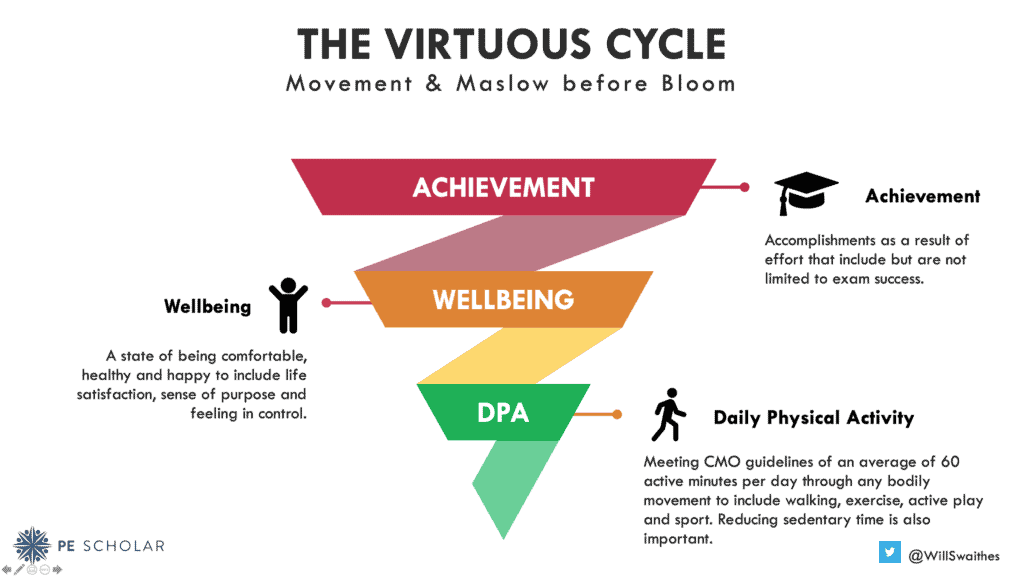
Health
I have been fortunate enough to continue to work with, contribute towards and reflect on the curriculum PE offers of over 100 schools in the past 9 months. In addition to this, I glean insight from over 40 trainee teachers placed at state and independent sector schools across the country. I think it is fair to say three things are consistent:
- (PE) teachers are exhausted from the continual thinking, re-thinking and reacting to the changing landscape in the desperate hunt to provide safe, fun, meaningful and inclusive opportunities for their students to engage in PE.
- No two schools have responded in the same way or without the best interests of all children and their families at the forefront of their plans
- Supporting better health and wellbeing of all students both today and for their futures is the principal ambition of PE
However, to say the situation is very fluid is a gross understatement, it is the health and wellbeing of staff that seems to be taking the biggest hit and in my opinion the rest quickly becomes impossible as a result. It is my intention that the following four editable resources help at least a little with these challenges and workload pressures as I am fortunate to be able to step back from the chalkface and to share these materials with many of you:
- The Wellbeing Curriculum resources I have created for key stages 2-4 have been extremely well received for classroom and practical setting delivery but remember they are also extremely well suited to online lesson delivery so please take a look before you put another minute into planning home learning resources
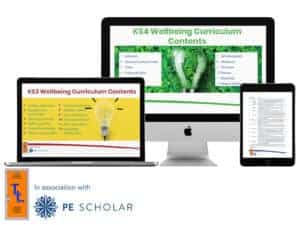
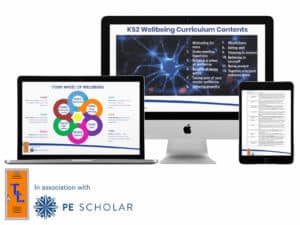
- A PE Road Map to Recovery – NGBs have produced comprehensive and helpful return to community sport roadmaps. I thought perhaps an overview of your strategic thinking to (safely and progressively) work towards ‘fully functioning’ physical education, school sport and physical activity might help when it comes to capturing and communicating plans in a proactive fashion with senior leaders, parents and students. Here is a starter for 10:
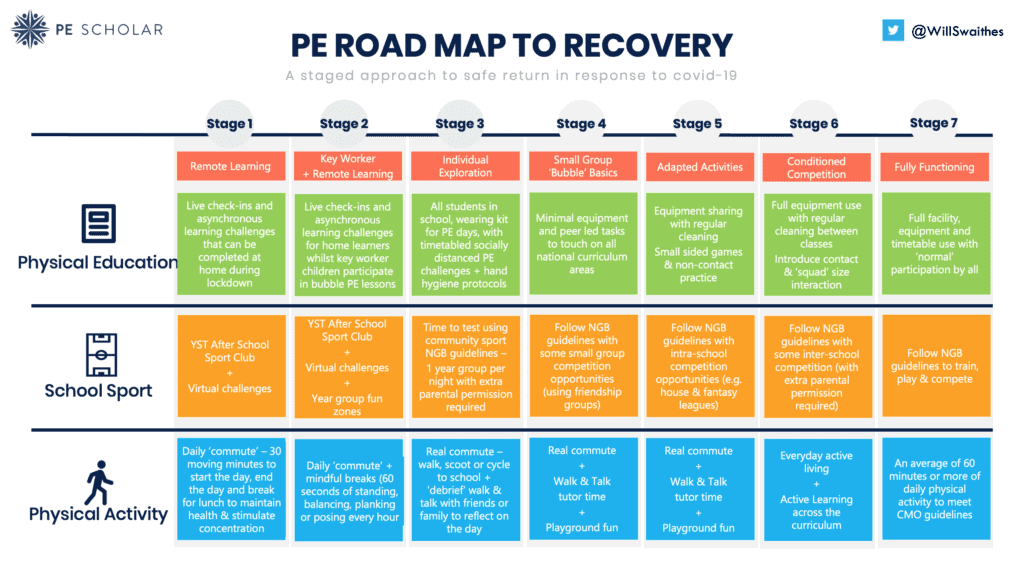
- An example risk assessment for PE – make sure you utilise afPE guidance via this document and DfE Annex A: Health and safety risk assessment advise but also remember a risk assessment is only as good as the practice of those implementing it. Consequently, if you are not confident that all staff continue to conduct all protocols, even during Friday Period 5 in deepest darkest December, then you really need to revisit and update your plans to ensure compliance is more than possible.
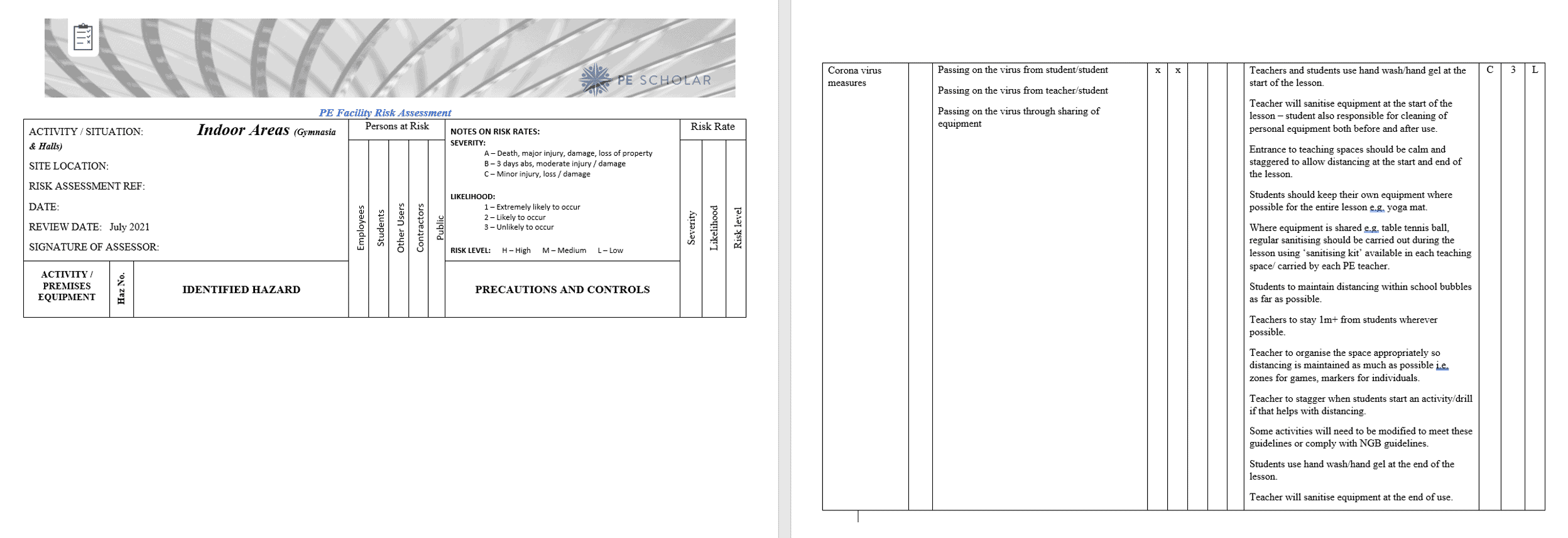
- A sample PE recovery curriculum to take you through until Easter – part 1 of this was well received back in the summer and, whilst many had plans to resort to more traditional team sport focused curricular models, I think this new strain of covid-19 and pressures on school sports halls for mass testing may have other ideas! If your students, staff and parents are happy and your facilities can accommodate a more typical model then great. But, if not, maybe the following can help?
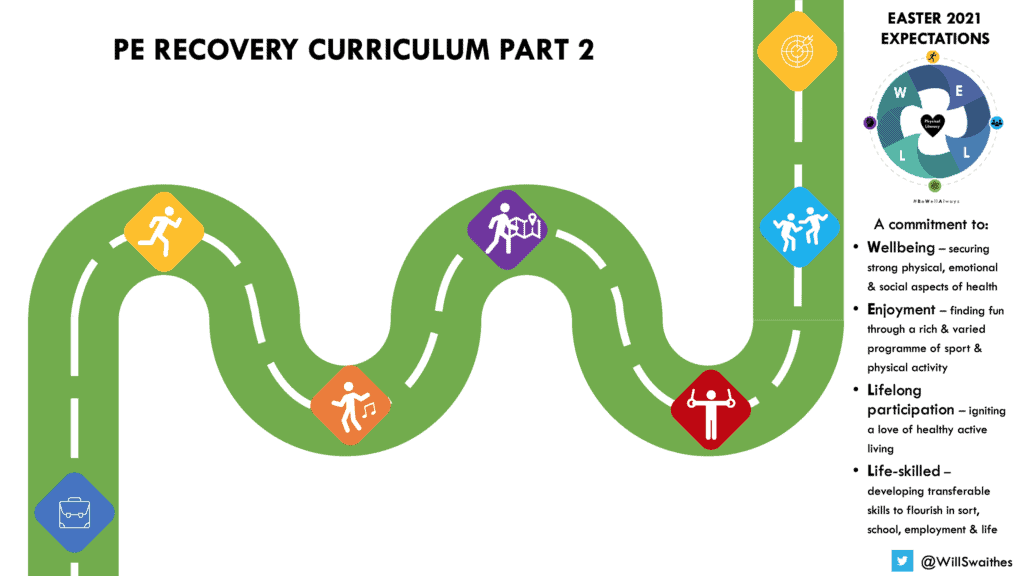
I have assumed a carrousel of activities that would suit most groups with the wellbeing curriculum utilised for classroom or remote learning for 12+ lessons. January is often a great time for New Year’s Resolutions and kick starting healthy habits so why not support students with a ‘couch to 5K’ plan that supports better target setting. Meanwhile, I am a total convert to the benefits of daily ‘wellbeing walks’ so why not build a unit of work around that or for groups that need a bit more structure and challenge then British Orienteering have some great free resources online. Next up is a unit of learning structured around traditional playground games that require little equipment or formal space and could form a great focus for the development of leadership and creativity skills. If you want some ideas for activities to include in here then try some of these Sport Australia ‘Playing for Life’ cards or accessing this great google form list of ‘social distancing PE games’ produced by Mr G. Don’t forget to access some of the great leadership materials from Sports Leaders uk like this playmaker award. For socially distanced dance ideas I am sure you can draw plenty of inspiration from Strictly but I would also recommend taking a look at doodle dance created by Claire, Jo and Louise as well as One Dance UK. For ‘gymnastic fitness’ you could create a blend of traditional gymnastics solo/ paired balance and flight activities with ideas from parkour uk, CrossFit, and even #GymnasticsWithMaxWhitlock. I have also utilised fitness blender quite a bit in schools.
Hope
I hope these resources help with your thinking, planning and evolving of physical education. I remain optimistic that all this hard work and pain will result in better PE for more young PEople if we continue to innovate, collaborate and reflect on the greatest needs for today and tomorrow.
Don’t forget the decision-making process diagram I created earlier in the year, with its hyperlinks to useful sources for insight gathering:
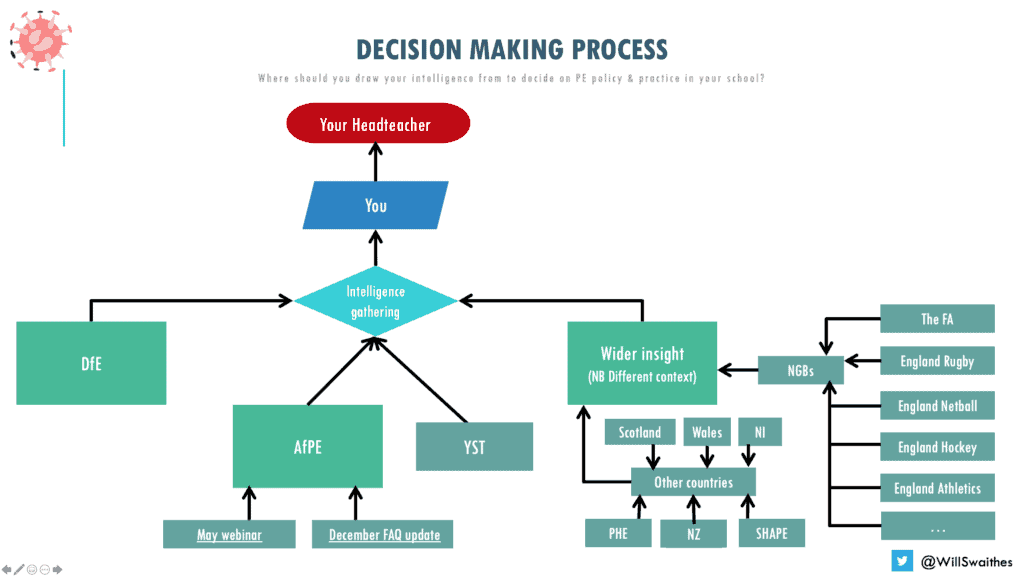
Meanwhile, the golden triangle for covid-19 transmission remains where proximity, time and ventilation factors combine so remember to keep yourself and others safe. Having spent a week with oximeter readings of 91-93 and a temperature hitting 40oC over Christmas I can say with certainty that, if you haven’t had it yet, you don’t want it and anything you can do to reduce the risk for yourself and others is well worth every effort!
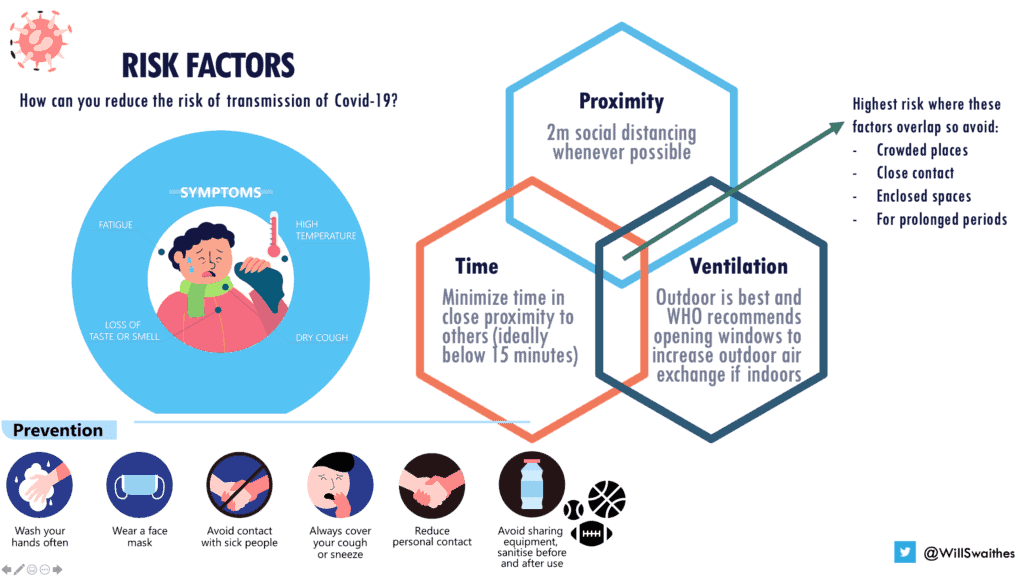
I’d just like to leave you with two infographics to support and challenge thinking a little further:
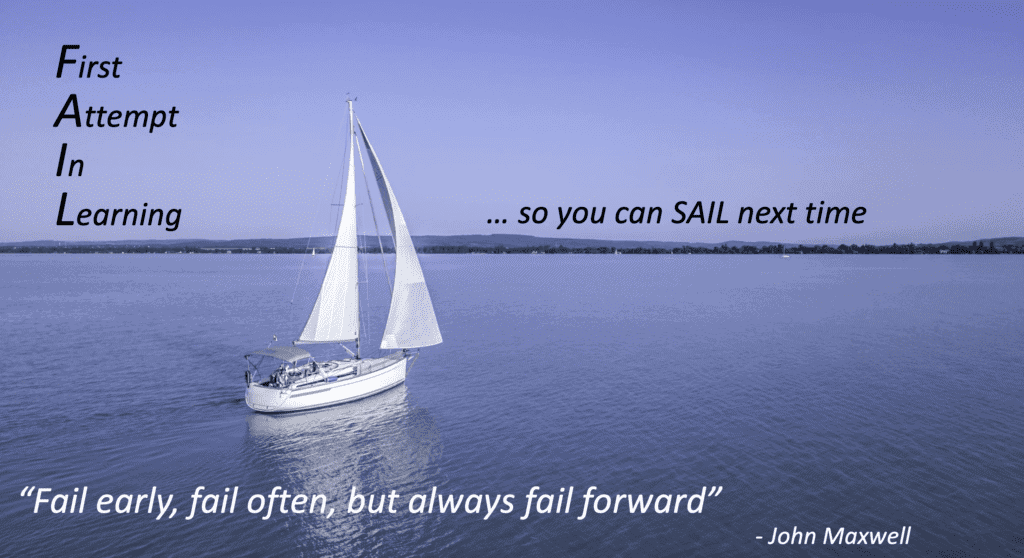
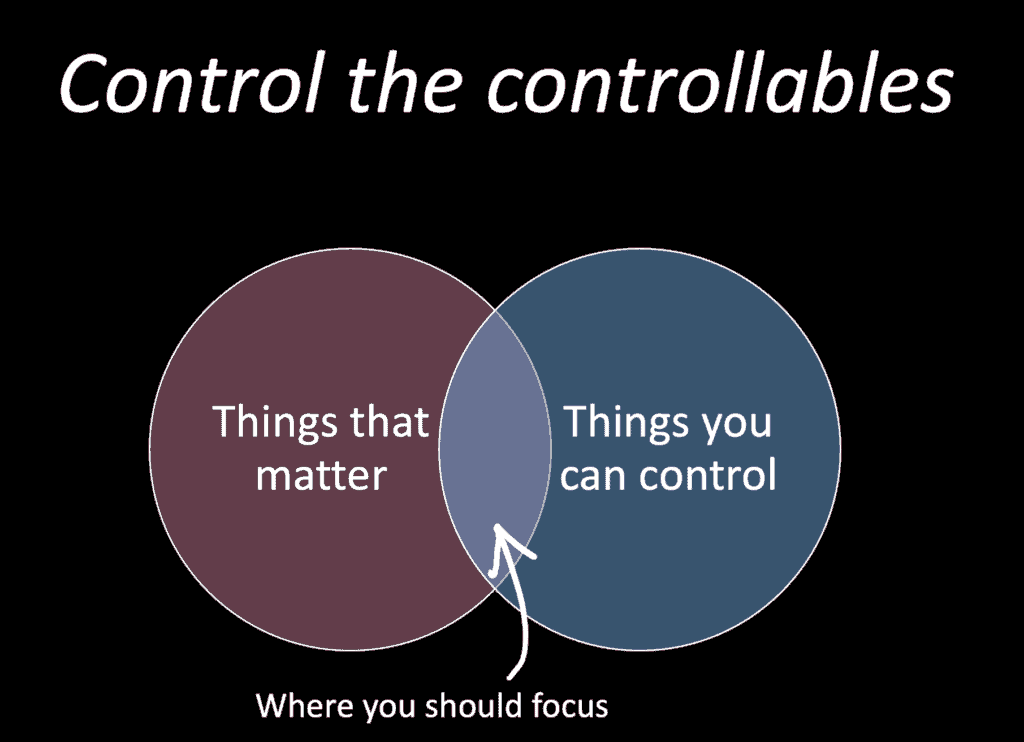
If you missed the following twitter contributions then here is a quick recap of a few recent ones:
- My top tips for remote learning [1]
- My 4 asks from government for 2021 [2]
- PE lessons of the future blog by Niall Statham and Damian Edwards [3]
- 6% of over 5,000 poll responses believe the UK government hasn’t (even remotely) considered the well-being of those who work in education at all in their decision making [4]
- Teaching is more art than science [5]
Want to find out more, here are some useful links:
- Watch a video overview of the Wellbeing Curriculum and access it here
- Read the full research paper on exploring the relationship between physical activity and happiness here
- Access team sport covid-19 guidance from National Governing Bodies (of sport) here
- Read more about how PE has pivoted, flexed and adapted to respond to covid-19 in Shaun Dowling’s new book that I am thrilled to have contributed towards.
If you would like to download a copy of the images / resources presented in this post please download below.



Responses